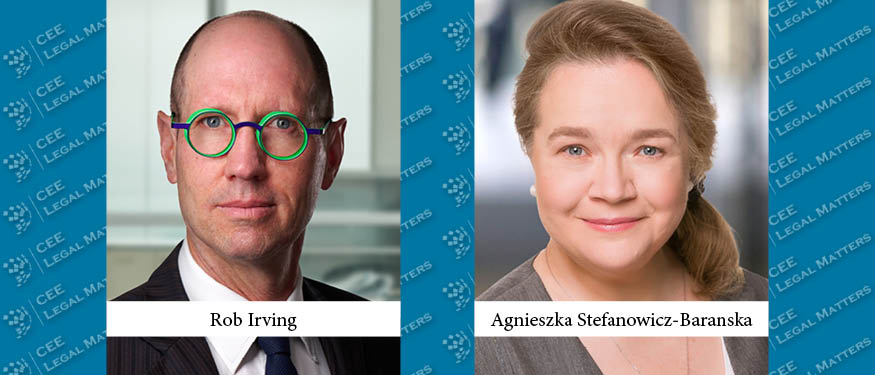Heralded as a cornerstone of the national economy, the Hungarian automotive sector faces significant challenges but also promising opportunities. Baker McKenzie Partner Zoltan Hegymegi-Barakonyi, Lakatos, Koves & Partners Partner Adam Mattyus, Szecskay Senior Partner Judit Budai, and Kinstellar Sector Head and Senior Counsel Akos Nagy take a deep dive into the sector’s status amidst a backdrop of labor shortages, geopolitical shifts, and the government’s concerted efforts to continue growth and maintain global competitiveness.
Still the Biggest Driver of the Economy
The “In Hungary, vehicle production is still one of the most important sectors, accounting for 25% of manufacturing output according to the data of the Hungarian Statistics Office,” Budai begins. “The automotive sector accounts for 90% of Hungary’s exports. The main destinations are Germany, the UK, France, and Italy – this justifies Hungary’s position as a suitable hub for the whole of Europe with its well-established road and communication networks and warehouses,” she explains.
Furthermore, she reports that, in 2023, “the automotive sector in Hungary employed around 100,000 people and was responsible for generating 20% of the national GDP. This is still impressive, although the sector – mainly due to COVID-19 – has been in decline since 2019 when we saw a record production level of automobiles.” According to Budai, in “recent months, German industry has reduced production, so the Hungarian export that serves this segment has slowed down and left over-capacities in Hungary.” Mattyus adds that, by December 2023, “Hungarian manufacturing output had fallen significantly, and so had vehicle production – down by 9% compared to December 2022.” Mattyus highlights the same cause: “This is mainly due to the weakness of the German economy, as Germany remains the most important market for the Hungarian automotive industry, where economic growth has at least stalled in the past year.”
It’s not all bad news though, with Mattyus stressing that “we also need to look at the start-up and expansion of investments in the sector. In this respect, last year was a successful one.” Budai agrees, adding that “significant development is expected from increasing Chinese involvement in Hungary, for example, the ongoing construction of a USD 14 million electric car factory by BYD. EV production attracts key suppliers such as the world’s largest battery producers for electric cars – for instance, Chinese CATL has a USD 7.6 billion factory to supply Mercedes and BMW.”
Moreover, Budai indicates that the strong position of the automotive industry is thanks to “investments of Audi, Mercedes, and BMW, who have their car factories in Hungary and which are in a phase of increased innovation. These OEMs also attract a lot of foreign suppliers, establishing development opportunities for local suppliers.” Additionally, Budai reports that the “Suzuki factory is still a strong performer with a well-established local supply chain.”
“The automotive sector in Hungary has shown resilience amidst recent geopolitical challenges,” Nagy chimes in. While uncertainties have impacted global supply chains, Hungary’s automotive industry has adapted swiftly, he says, “leveraging its diversified market presence. Despite some initial setbacks, production levels have remained stable, albeit with some adjustments in response to supply chain disruptions.”
Such is the strength of the sector that Hegymegi-Barakonyi expects the Hungarian vehicle industry to potentially rise to 30% of the country’s GDP by 2030, “together with the battery production and related investments, which are already significant but continue to grow.”
Workforce Road Bumps
The automotive sector in Hungary, like its counterparts across Eastern Europe, is currently facing a significant workforce challenge. Hegymegi-Barakonyi highlights that “the lack of labor is probably the biggest challenge for car-making companies.” He highlights the dependency on foreign workers due to the insufficient number of Hungarian workers, with one of three car builders in Hungary importing a “skilled workforce from India to meet demand.”
Echoing Hegymegi-Barakonyi, Mattyus identifies the missing workforce as a central challenge: “The huge labor demand of new or expanding factories cannot be satisfied by the labor supply of cities and villages next to the new production plants.” Mattyus adds that the skilled workforce’s preference for higher wages in Western Europe exacerbates the situation. Furthermore, he points out that “the increasing demand for new or expanding factories for energy, which the energy-poor Central European countries can only satisfy with increased investment, also poses a significant challenge. And, we must not forget the environmental protection objections of the population living around the factories, which has already led to lengthy legal battles.”
Budai agrees with both, adding that Hungary’s labor force is getting expensive due to the country’s macroeconomic problems. “The volatile export demand creates production and labor overcapacity, which may create working capital and liquidity difficulties. Therefore, among others, the vehicle industry cannot satisfy wage increase expectations of the labor force to keep up with inflation,” she says. “This creates tensions and increased activity of trade unions stepping up in the interest of salary increases, which increase the risk of OEMs and suppliers dealing with strike threats.” Moreover, Budai says that “new skills are required in line with the increased usage of artificial intelligence, electric vehicle technology, and other automation. Therefore, constant labor force restructuring is necessary, which eventually puts employers in a position where a mass layoff is necessary if the speed of re-education of the labor force cannot follow the technological development needs.”
Overall, “the automotive sector faces multifaceted challenges,” Nagy adds, naming “liquidity constraints, the need for refinancing, and ongoing restructuring efforts,” as the most prominent ones. “Geopolitical uncertainties have intensified these challenges, impacting both domestic and international operations,” he says, while also agreeing that “labor shortages and skills mismatches pose significant obstacles to sustaining production levels.”
Governmental Cruise Control
The Hungarian government has positioned itself as a mediator in the global automotive industry, aiming to transform Hungary into a “meeting point” for Western and Eastern automotive giants, notes Hegymegi-Barakonyi. This vision includes the government supporting a “technological transition, including the production of batteries for electric vehicles and other modern facilities of mobility like ZalaZone for the testing of self-driving vehicles.”
Mattyus provides further insight into the state’s role in fostering the sector’s growth through financial incentives and infrastructural developments, all within the EU’s state aid regulations. “Large investors can count on infrastructure developments that also serve community purposes, such as the construction of railway tracks and highway connections or the establishment of schools teaching in foreign languages,” he outlines. “Furthermore, a separate government body deals with attracting foreign investors and helping them in the course of the implementation of their investments, among other things, by finding sites where investments can be inaugurated, negotiating with local governments, recommending professional advisors.” According to him, qualifying certain projects as investments of “enhanced importance by the government, facilitates the speed up of the licensing processes before the respective authorities. This takes decision-making away from local authorities and is causing political tension.”
This article was originally published in Issue 11.3 of the CEE Legal Matters Magazine. If you would like to receive a hard copy of the magazine, you can subscribe here.






















